Oxford shirts are a timeless wardrobe staple—crisp, breathable, and infinitely versatile. For many brands and retailers, offering private label Oxford shirts is a way to elevate their product line, showcase their own identity, and command higher margins. But before you commit to a bulk order, it’s crucial to understand the minimum order requirements (MOQs) tied to various branding options. Private labeling allows you to put your brand name on high-quality fabrics, custom tags, and packaging—but each element, from woven labels to printed hang tags, comes with its own minimum run. Knowing these thresholds ahead of time helps you balance customization with budget, ensuring you don’t overcommit or leave money on the table.
Imagine this: you’re a boutique owner excited to launch your own line of tailored Oxford shirts with embroidered monograms on the chest pocket. You reach out to a manufacturer, only to learn that adding embroidery pushes your MOQ from 100 shirts to 300. That unexpected jump could derail your launch budget—and force you to revise your business plan on the fly. Stick with us, and you’ll learn how to anticipate these MOQ changes, weigh costs versus perceived value, and negotiate the best possible deal. Ready to dive in? Let’s start by answering exactly what private labeling means in the context of Oxford shirts—and why so many B2B buyers are asking, “What minimums apply if I want my own label?”
What Is Private Labeling for Oxford Shirts?
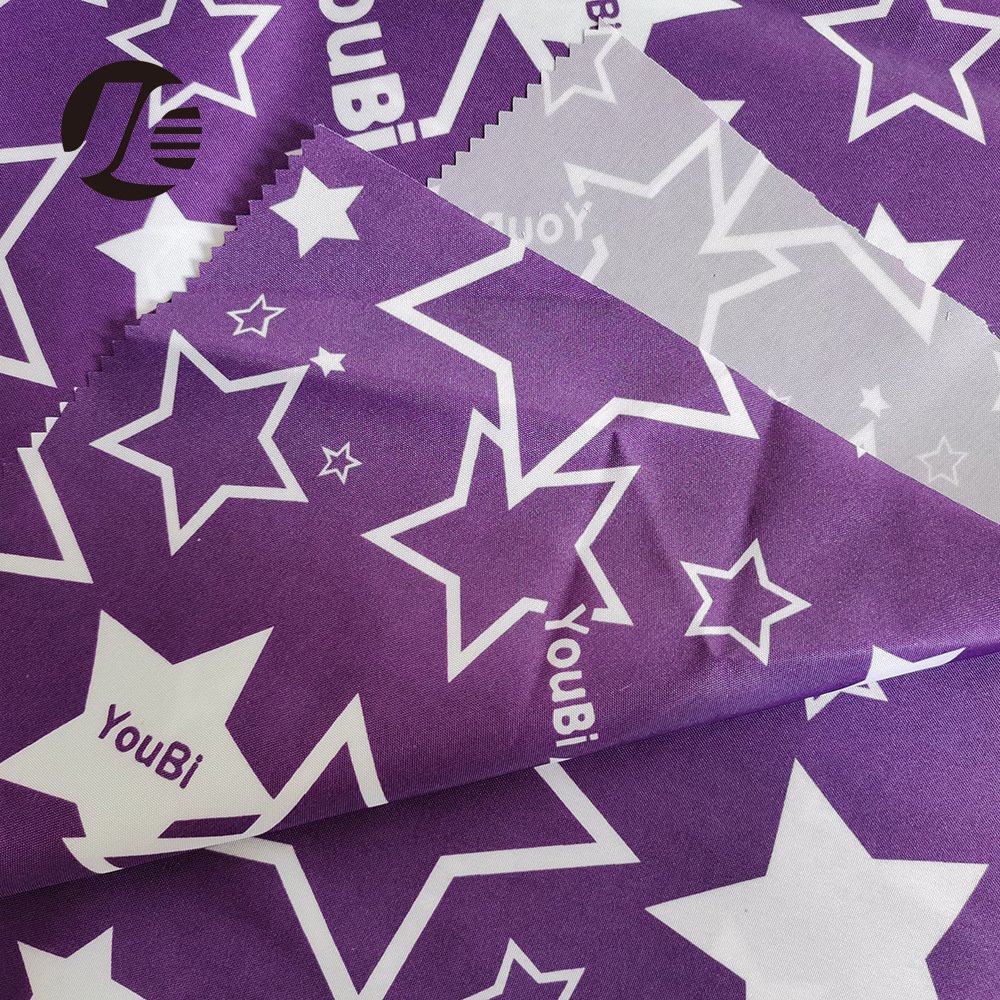
Private labeling refers to manufacturing products that carry a retailer’s or brand’s logo, design, and packaging without the brand having to build its own factory. Instead of selling generic, unbranded Oxford shirts, you work with a factory—like SzoneierFabrics—that produces shirts with your custom label, hang tags, and even packaging. Basically, private labeling transforms a standard Oxford shirt into a branded product that aligns with your company’s identity, quality standards, and price point. Unlike white-label items where the manufacturer’s generic tags remain, private label means everything from fabric choice to label design reflects your brand’s vision.
Understanding Private Labeling Mechanics
How Private Label Differs from White Label and OEM
- White Label: Factories produce a generic product that multiple retailers can sell under their own name. Minimum customization. Usually lowest MOQ (e.g., 50–100 pieces).
- OEM (Original Equipment Manufacturing): More extensive customization in design, often including fabric development or pattern adjustments. MOQs start around 200–300 pieces due to pattern-making costs.
- Private Label: Falls between the two. You choose from existing shirt patterns but add custom labels, hang tags, or minor modifications. MOQs often start at 100–200 pieces, depending on branding options.
Why B2B Buyers Choose Private Label Oxford Shirts
- Brand Differentiation: Instead of competing on price alone, private label lets you emphasize unique features: special fabrics (e.g., 160 GSM Egyptian cotton), exclusive collar designs, or signature stitching patterns.
- Higher Margins: Branded merchandise can usually sell for 20–40% more than unbranded equivalents. Consumers perceive customization—like a woven label—as a mark of quality.
- Control Over Quality: You can specify fabric weight, thread count, finishing treatments, and packaging materials. This reduces the chance of inconsistent batches or “factory seconds” slipping through.
Cost Components and How They Relate to MOQs
- Base Shirt Cost: Depends on fabric (GSM, yarn count), standard button quality, single- vs. double-needle stitching, and basic finishing. For a mid-tier 140–150 GSM Oxford shirt, factory cost might be \$5.50–\$7.00 per unit at 200-piece MOQ.
- Labeling Cost: • Woven Label: \$0.30–\$0.50 per shirt (varies by quantity). • Printed Care Tag: \$0.10–\$0.20 per shirt. • Hang Tag: \$0.25–\$0.40 per shirt (depends on color count and paper stock). Combined label setup charges (one-time artwork fee) often \$100–\$200. If your order is under the factory’s minimum for label runs (typically 200–300 woven labels per design), they may charge the full label cost even if you order fewer shirts.
- Packaging Cost: • Poly Bag: \$0.08–\$0.15 each. • Custom Gift Box (single-color print): \$0.60–\$0.80 each; multi-color can be \$1.00–\$1.50. • Custom Tissue Paper: \$0.05–\$0.08 per shirt for simple branding, \$0.10–\$0.15 for full-color prints. Packaging MOQs often align with label MOQs because factories batch these jobs together to avoid small-run fees.
- Embroidery/Printing Cost: • Logo Embroidery (standard 5,000-stitch design): \$2.00–\$3.00 per shirt at 100–199 pieces; \$1.50–\$2.00 at 200–499 pieces; \$1.20–\$1.50 at 500+. • Screen Printing (one-color chest print): \$1.00–\$1.50 per shirt at 100–199 pieces; \$0.80–\$1.20 at 200–499 pieces; \$0.50–\$0.80 at 500+ pieces. Embroidery digitization is a one-time \$80–\$120 fee unless waived for large orders.
Minimum Order Requirements: Why They Exist
- Artwork Setup and Tooling Costs: • Woven Label Warping: Creating a loom pattern requires at least 200–300 meters of woven label tape, so you usually must order at least 200–300 labels. If you want 100 shirts with logo labels, you may still pay for 300 labels.
- Fabric and Color Dyes: • Dye-lot minimums typically 100–200 kg of greige (undyed) fabric per color. After weaving and preparation, this yields enough yardage for about 150–250 shirts of a single color. If you want multiple colors (e.g., navy, white, light blue), each color’s yardage must meet its own dye-lot MOQ.
- Factory Efficiency: • Sewing lines prefer batches of at least 100–200 units to minimize changeovers. Smaller runs may incur a “small run fee” of \$1.00–\$2.00 per unit to cover downtime.
- Inventory and Waste Management: • The more complex the branding (multiple labels, unique packaging, specialty finishes), the higher the inventory overhead for the factory. They build MOQs to ensure they can clear materials without excessive leftover stock.
Real-World Example: Boutique Brand Launch
- Sarah’s Story Revisited: • Sarah wanted 80 Oxford shirts with her boutique’s woven label and printed hang tags. • The factory’s woven-label MOQ was 200 labels, producing 80 shirts. She still paid for 200 labels (\$0.40 x 200 = \$80), even though she used only 80. • Hang tags: The print shop required at least 500 units per color for a reasonable paper-stock run (\$0.25 x 500 = \$125), so her unit hang tag cost ended up being \$125/80 = \$1.56—over six times what she’d hoped. • Lesson: Next time, Sarah planned to combine hang tag orders with a friend’s brand to share MOQ costs—or bump her order to 200 shirts to fully utilize label supplies.
- Key Takeaway: • Always confirm MOQ for each branding component separately, as they often differ. • Negotiate with the factory to use generic label backstock if you don’t need a unique woven design. Some mills keep a library of blank labels (e.g., white with “100% Cotton”) that you can buy at lower MOQ.
What Are Common Branding Options for Private Label Oxford Shirts?
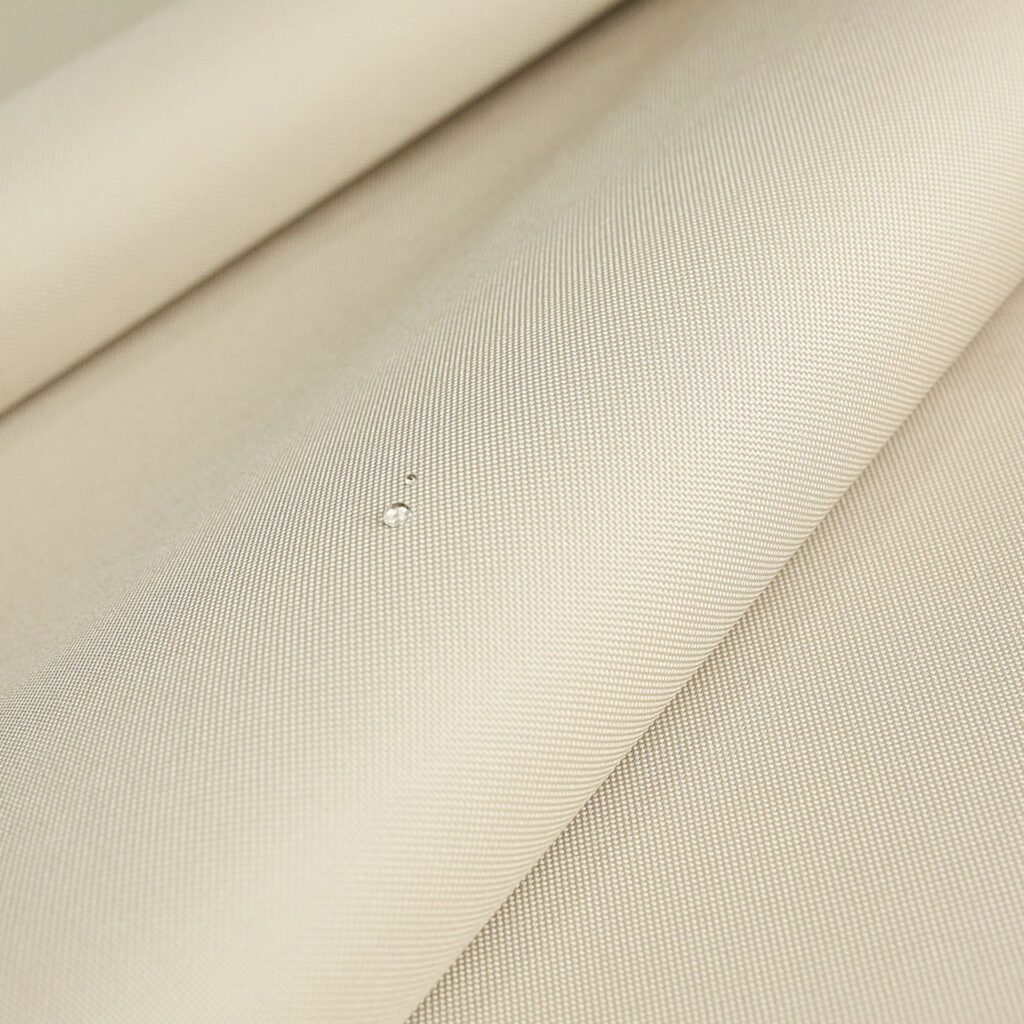
Branding options for private label Oxford shirts range from simple tags hanging off the collar to full-color packaging that tells your brand story. Common methods include woven labels sewn into the neckline, printed care tags inside the hem, hang tags affixed to buttonholes, custom embroidery or screen printing on the chest, and branded poly bags or gift boxes. Each option carries its own cost structure, minimums, and impact on perceived quality. The more elaborate the branding (e.g., multi-color woven labels, embossing on hang tags), the higher the MOQ and per-unit cost—but also the greater the perceived value to end customers.
Branding Methodologies and Their Implications
Woven Labels vs. Printed Labels
- Woven Labels • Definition: Made by weaving colored threads into a design on a loom. Commonly used for brand names, logos, and care instructions. • Typical MOQ: 200–300 labels per design. • Cost Structure: \$0.30–\$0.50 per label at MOQ. Cost per label drops to \$0.20–\$0.30 at 500+ labels. • Font & Color Limits: Most mills allow up to 6 colors per label. Adding colors beyond that can add \$0.05–\$0.10 per label. • Durability: High—resists fading and fraying. Ideal for long-lasting brand visibility.
- Printed Labels • Definition: Ink printed onto woven fabric or satin tape, usually cheaper and faster to produce. • Typical MOQ: 500–1,000 labels per design, depending on ink stock size. • Cost Structure: \$0.15–\$0.25 per label at 500 MOQ. Drops to \$0.08–\$0.12 at 2,000+. • Print Quality: Limited color vibrancy compared to woven. Fine lines may blur over multiple production runs. • Durability: Lower than woven; wash cycles can cause ink to fade or crack over time. Use digital prints for short-run or season-specific designs.
Hang Tags: Design, Material, and Finish
- Hang Tag Materials • Cardstock (300–350 gsm): Cheapest, prints well, but less tactile. \$0.20–\$0.30 per tag at 500-piece run. • Textured Paper (e.g., linen finish, 200–250 gsm): Feels more upscale; \$0.30–\$0.45 per tag at 500-piece run. • Plastic/Polypropylene: Waterproof and tear-resistant; \$0.40–\$0.60 per tag at 500-piece run. • Premium Options (wood veneer, metal tags): \$1.00–\$2.00 per tag, MOQ typically 1,000–2,000 units.
- Hang Tag Finishes • Single-Color Print: \$0.20–\$0.30 per tag at 500 units. • Full-Color Print (up to 4 colors): \$0.35–\$0.50 per tag at 500 units. • Foil Stamping or Embossing: Adds \$0.10–\$0.20 per tag. • UV Spot Coating: Adds \$0.05–\$0.10 per tag for gloss/matte highlights on specific areas. • Die-Cut Shapes (beyond simple rectangles): Adds \$0.05–\$0.15 per tag.
Packaging: Poly Bags, Gift Boxes, and Beyond
- Poly Bags • Standard Clear Poly Bag (no print): \$0.08–\$0.12 per bag at 500 pieces. • Custom Printed Poly Bag (one-color logo): \$0.15–\$0.20 per bag at 500 pieces. • Multi-Color Printed Bag: \$0.25–\$0.35 per bag, MOQ often 1,000 pieces.
- Gift Boxes • Single-Color Cardboard Box: \$0.60–\$0.80 per box at 500. • Four-Color Printed Rigid Box (paperboard): \$1.00–\$1.50 per box at 500. • Magnetic Closure Gift Box: \$2.00–\$3.00 per box, MOQ 1,000.
- Tissue Paper & Inserts • Plain Tissue (unbranded): \$0.03–\$0.05 per sheet. MOQ 1,000 sheets. • Branded Tissue (single-color logo): \$0.05–\$0.08 per sheet, MOQ 1,000 sheets. • Business Card/Instruction Insert: \$0.10–\$0.20 per piece, MOQ 500.
Embroidery and Screen Printing on Fabric
- Embroidery • Small Chest Logo (approx. 3″ × 3″, 5,000 stitches): – MOQ: 100 pieces. – Cost per Unit: \$2.00–\$3.00 at 100–199 pieces; \$1.50–\$2.00 at 200–499; \$1.20–\$1.50 at 500+. – Digitization Fee: \$80–\$120 one-time (waived for 500+ pieces). – Thread Options: Standard polyester threads included; metallic or specialty threads add \$0.10–\$0.20 per shirt. • Large Back Design (6″ × 6″, 12,000 stitches): – MOQ: 200 pieces. – Cost per Unit: \$3.50–\$4.50 at 200–299; \$3.00–\$3.50 at 300–499; \$2.50–\$3.00 at 500+.
- Screen Printing • One-Color Chest Print (<10 sq. inches): – MOQ: 100 pieces. – Cost per Unit: \$1.00–\$1.50 at 100–199; \$0.80–\$1.20 at 200–499; \$0.50–\$0.80 at 500+. – Setup Fee: \$30–\$50 per color for runs under 200; waived above 200. • Two-Color or Full-Color Print (10–20 sq. inches): – MOQ: 150 pieces. – Cost per Unit: \$2.50–\$3.50 at 150–199; \$2.00–\$2.80 at 200–499; \$1.50–\$2.00 at 500+. – Screen Setup: \$50–\$80 per color for runs under 200; waived above 300.
Critical Thinking: Weighing Branding Benefits vs. Costs
- Perceived Value vs. Budget • A high-end boutique might justify a \$2.00 embroidered logo because customers expect that level of detail. However, a value-focused uniform supplier might stick to printed labels and basic woven tags to keep costs down.
- MOQ Trade-Offs • If your brand demands premium packaging (e.g., rigid gift boxes), but you only need 200 shirts, you might face a conflict: gift box MOQs are 500+. In that case, consider simpler packaging or a strategic partnership with another brand to share MOQ costs.
- Quality Control and Consistency • Woven labels provide superior durability, but they require more lead time (3–5 weeks) and higher minimums. Printed labels are quicker and cheaper but can fade. Assess your end market: does your customer value longevity more than speed to market?
What Minimum Order Quantities (MOQs) Apply to Different Branding Options?
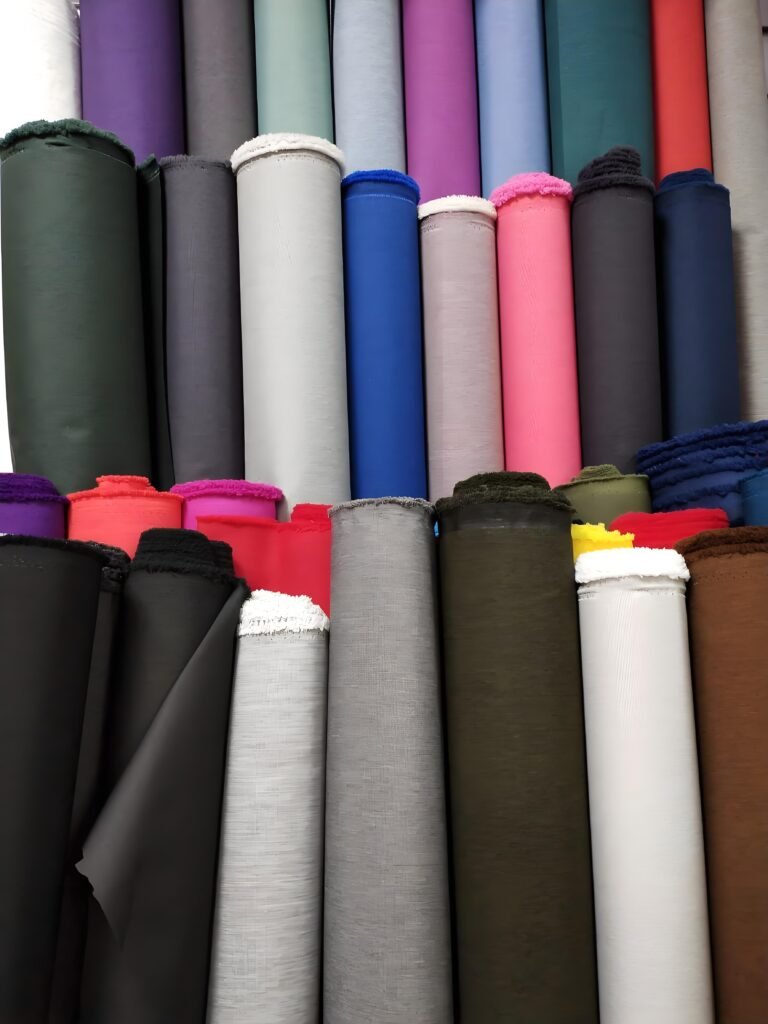
When you add branding elements like woven labels, printed labels, hang tags, or custom packaging, each component often has its own minimum run requirement. Woven labels usually require 200–300 pieces per design, printed labels need 500–1,000, hang tags start around 500, and full-color printed poly bags or boxes often demand 500–1,000 units. These MOQs ensure suppliers cover setup costs for looms, printing plates, and die cuts.
Branding MOQs Explored
Woven Labels
- MOQ Explanation Weaving a custom label involves creating a loom pattern. Looms are expensive to set up, so factories require at least 200–300 labels to justify the process. Even if you order only 100 shirts, you may pay for 300 labels, driving your “per shirt” label cost higher if you don’t fully utilize the run.
- Cost Breakdown 200 Labels: \$0.35–\$0.50 each → \$70–\$100 total. 300 Labels: \$0.30–\$0.45 each → \$90–\$135 total. 500+ Labels: \$0.20–\$0.30 each → \$100–\$150 total.
- Implication for Orders If your shirt order is 150 units, you’ll still pay for 300 woven labels. Your effective label cost per shirt becomes \$0.30–\$0.67, not the “ideal” \$0.20–\$0.30.
Printed Labels (Satin or Woven Fabric with Ink)
- MOQ Explanation Printed labels rely on ink rolls and printing plates. Factories usually require 500–1,000 labels per design to cover ink mixing, plate creation, and machine setup. Different ink colors or materials (satin vs. cotton tape) may bump MOQ by another 200–300 units.
- Cost Breakdown 500 Labels: \$0.20–\$0.30 each → \$100–\$150 total. 1,000 Labels: \$0.10–\$0.15 each → \$100–\$150 total. 2,000+ Labels: \$0.08–\$0.12 each → \$160–\$240 total, but cheaper per unit.
- Implication for Orders If your shirt order is only 200 pieces, you’ll still pay for 500 printed labels. Effective label cost per shirt = \$0.50–\$0.75 instead of \$0.10–\$0.15.
Hang Tags
- MOQ Explanation Hang tags require die-cut templates and printing plates. Basic rectangular hang tags often have a 500-unit minimum; die-cut shapes or foil stamping can push that to 1,000. The more elaborate the finish (UV coating, embossing), the higher the MOQ, as specialized machines must be calibrated.
- Cost Breakdown 500 Tags (Single-Color): \$0.20–\$0.30 each → \$100–\$150. 500 Tags (Full-Color): \$0.35–\$0.50 each → \$175–\$250. 1,000 Tags (Full-Color + UV Spot): \$0.40–\$0.60 each → \$400–\$600. Die-Cut (Unique Shape): Increases unit cost by \$0.05–\$0.15; MOQ = 1,000.
Packaging (Poly Bags, Gift Boxes, Tissue Paper)
- MOQ Explanation Packaging requires printing on rolls or sheets, then die-cutting. Poly bags often have a 500-piece minimum; custom printed boxes usually start at 500. Tissue paper sheets often start at 1,000. Premium packaging (magnetic boxes, custom rigid boxes) pushes MOQ to 1,000–2,000 units.
- Cost Breakdown Poly Bag (500, Single-Color): \$0.15–\$0.20 each → \$75–\$100. Gift Box (500, Single-Color): \$0.60–\$0.80 each → \$300–\$400. Rigid Gift Box (1,000, Four-Color): \$1.20–\$1.50 each → \$1,200–\$1,500. Tissue Paper (1,000 sheets, Single-Color): \$0.05–\$0.08 each → \$50–\$80.
- Implication for Orders If your shirt order is 300 units, you still pay for 500 poly bags (even if you only need 300). Effective poly bag cost = \$0.25–\$0.33 per shirt. Gift box MOQ can complicate small-run product launches: paying for 500 boxes while selling only 300 shirts means wasted packaging cost.
Embroidery and Printing
- MOQ Explanation Embroidery machines require digitized artwork and a minimum run (often 100–200 shirts) to justify thread changes and machine setup. Screen printing typically needs at least 100 units per design per color; adding additional colors or complex graphics can push this to 150–200.
- Cost Breakdown Embroidery (100 pieces, 5,000 stitches): \$2.50 each → \$250 total + \$100 digitization = \$350, \$3.50 per shirt. Embroidery (300 pieces, 5,000 stitches): \$1.80 each → \$540 total + waived digitization = \$540, \$1.80 per shirt. Screen Print 1-Color (100 pieces): \$1.50 each → \$150 total + \$50 setup = \$200, \$2.00 per shirt. Screen Print 1-Color (300 pieces): \$0.90 each → \$270 total + waived setup = \$270, \$0.90 per shirt.
- Implication for Orders If you want embroidery on only 80 shirts, you’ll still pay for 100 (or pay a “small-run” fee of \$1–\$2 per shirt if the factory extends to 80 units), making your cost \$3.50–\$4.50 per shirt vs. \$1.80.
How Do Fabric Choices and Quality Affect MOQs?
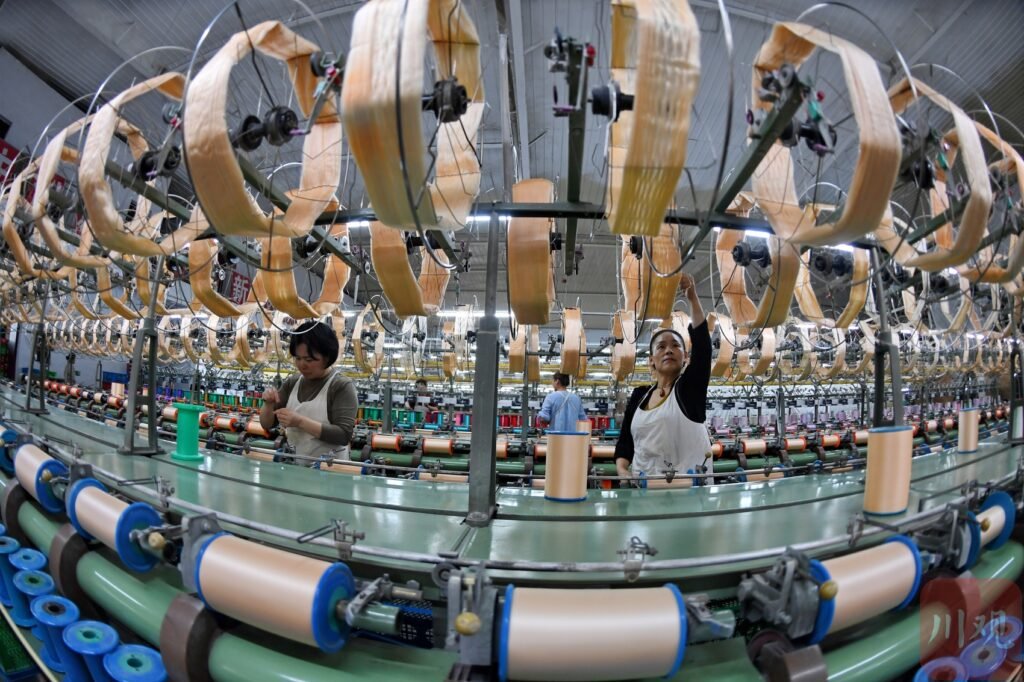
Fabric specifications—such as GSM (weight), yarn count, and dye-lot size—directly influence minimum order sizes. Lightweight Oxford cloth (120–140 GSM) may have a dye-lot MOQ of 100–150 kg (yielding \~150–250 shirts), while heavier 160–180 GSM premium cloth often requires 200–250 kg per color (yielding \~200–300 shirts). Yarn count (30s, 40s, 60s) also matters: higher yarn counts are spun in smaller quantities and have stricter MOQs to balance mill output. Understanding these parameters helps you plan orders that match both your quality standards and budget.
Fabric Factors Driving MOQ
GSM (Grams per Square Meter) and Dye-Lot Requirements
- What GSM Means GSM indicates the density and weight of the fabric: higher GSM = heavier, more durable cloth.
- Dye-Lot Minimums 120–140 GSM (Lightweight Oxford): Dye-lot MOQ \~100–150 kg greige → \~150–250 shirts per color. 140–160 GSM (Midweight Oxford): Dye-lot MOQ \~150–200 kg → \~200–300 shirts per color. 160–180 GSM (Heavyweight Premium): Dye-lot MOQ \~200–250 kg → \~250–350 shirts per color.
- Implication for Orders If you only need 100 shirts in a unique shade, but the dye-lot MOQ yields 200 shirts, you must either accept 200 or pay a surcharge for a smaller lot (often \$0.50–\$1.00 extra per shirt).
Yarn Count (30s, 40s, 60s) and Spinning Batch Sizes
- What Yarn Count Means Yarn count (e.g., 30s×30s, 40s×40s, 60s×60s) refers to the fineness of the yarn: higher counts yield smoother, softer cloth.
- Spinning Batch Minimums 30s×30s Yarn: Mill requires 500–1,000 kg batch → \~3,500–7,000 meters, enough for \~300–600 shirts per color. 40s×40s Yarn: Batch minimum \~600–1,200 kg → \~4,500–9,000 meters, enough for \~350–700 shirts. 60s×60s Yarn: Batch minimum \~800–1,500 kg → \~6,000–11,000 meters, enough for \~400–800 shirts.
- Implication for Orders Ordering premium 60s×60s cloth for 150 shirts may force you to pay for 400 shirts at the mill’s yarn price. The rest can be stocked for future runs, but upfront cost is high.
Fabric Finishes (Enzyme Wash, Anti-Pilling, Shrink-Resistant)
- MOQ Explanation Special finishes require additional processing tanks or chemical treatments, each with its own minimum: • Enzyme/Stone Wash Tank Minimum: \~500 kg (yield \~700–1,000 shirts). • Anti-Pilling Treatment Batch: \~200 kg (yield \~250–350 shirts). • Shrink-Resist Finish Batch: \~300 kg (yield \~350–450 shirts).
- Cost Impact Enzyme/Stone Wash: Adds \$0.30–\$0.50 per shirt; MOQ implies you must process 700+ shirts even if you need 200. Anti-Pilling: Adds \$0.20–\$0.30 per shirt; MOQ \~250. Shrink-Resist: Adds \$0.30–\$0.40 per shirt; MOQ \~350.
- Implication for Orders If you want just 100 enzyme-washed Oxford shirts, you end up paying for 700 shirts at that finish, unless you pay a “small batch surcharge” (\~\$1.00 extra per shirt).
Fabric Sourcing: Mill vs. Stock Programs
- Mill-to-Order vs. Stock Program Mill-to-Order: You specify GSM, yarn count, and dye shade; the mill weaves fabric based on your spec. Requires full dye-lot and spinning batch MOQs, as noted above. Stock Program: Mills keep certain fabrics (e.g., 140 GSM, 40s×40s, standard navy, white, light blue) in inventory. You can order as few as 100 meters or enough for 80–100 shirts per color.
- MOQ & Cost Comparison Mill-to-Order (Custom Color/GSM): MOQ 150–250 shirts per color; unit cost \$6.00–\$7.50 depending on yarn count and GSM. Stock Program Fabric: MOQ 80–100 shirts per color; unit cost \$5.50–\$6.50.
- Implication for Orders If you simply need classic white or navy Oxford, using stock fabric can reduce your MOQ from 200 to 80 shirts, shaving \$0.50–\$1.00 off per unit. Custom colors or weights lock you into higher MOQs and marginally higher costs.
Which Customization Methods Require Higher Minimums?
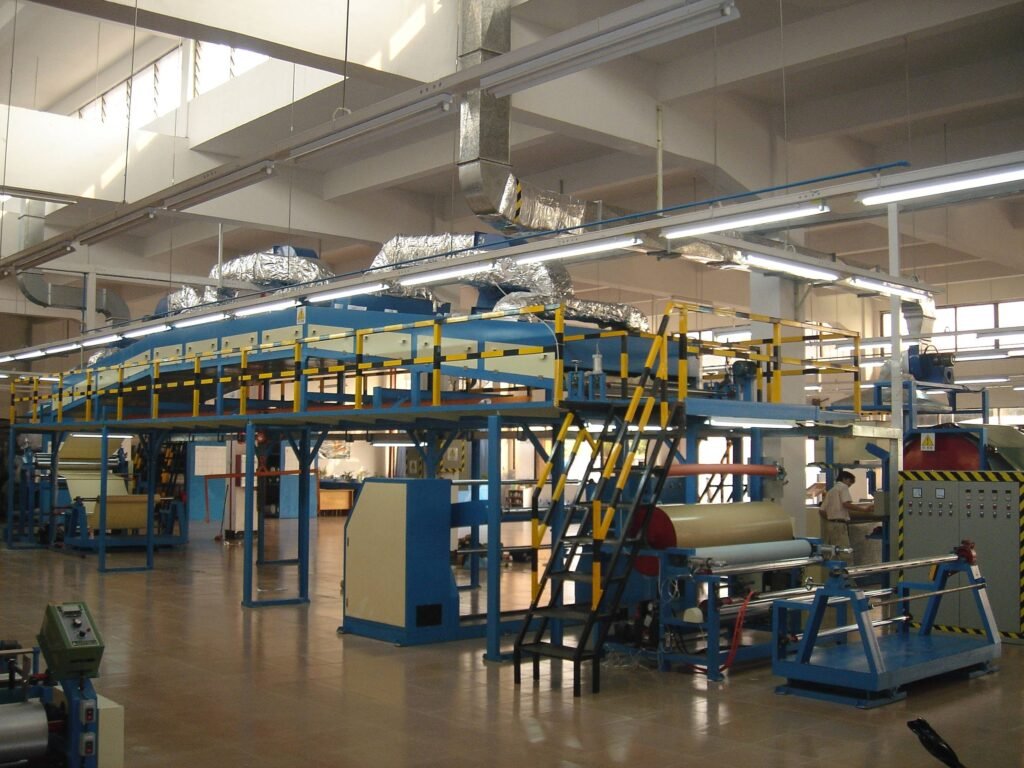
When you dive into specific customization options, certain methods carry much steeper minimum order requirements. Woven labels, especially multi-color or specialty fabric labels, typically require 200–300 pieces per design; custom hang tags often start at 500 units; printed poly bags and gift boxes can demand 500–1,000 units; and specialty finishes like foil stamping on tags or embossing on labels push MOQs to 1,000+. These thresholds exist because each method involves unique artwork setup, tooling, or printing plate costs. Understanding exactly which customization steps drive MOQs helps you avoid surprises in your quote.
Analyzing Customization Method MOQs
Woven Labels & Specialty Fabrics
- Loom Setup & Color Counts • Standard Woven Label (up to 6 colors): MOQ 200–300 labels. • Multi-Color (>6 colors) or Specialty Threads (metallic, reflective): Increases MOQ to 500. • Production Insight: Each additional color adds \$0.05–\$0.10 per label; metallic threads add \$0.10–\$0.15. Factories need enough labels to fully load the weaving frame, so 300 labels is the bare minimum, and 500+ if you push color or thread complexity.
- Specialty Fabric Backings (Satin, Twill, Elasticized Tape) • Satin Tape Woven Label: MOQ 300–500. Cost per label \$0.40–\$0.60 at 300 units. • Elasticized Label (stretchable): MOQ 500. Cost per label \$0.50–\$0.70. • Critical Trade-Off: Satin and elastic labels look more upscale, but their higher MOQ means you’re paying for hundreds of labels you may not immediately need. Factor in storage space and potential design changes before ordering large runs.
Hang Tags & Printing Complexity
- Die-Cut vs. Straight-Cut & Finish Types • Straight-Cut Hang Tag (simple rectangle): MOQ 500 for single-color print. Cost \$0.20–\$0.30 each. • Die-Cut Unique Shapes (e.g., custom silhouette of a shirt or logo shape): MOQ 1,000. Adds \$0.05–\$0.15 per tag. • Finishes: – Single-Color Print: MOQ 500. – Full-Color Print (up to 4 colors): MOQ 500, cost \$0.35–\$0.50 each. – Foil Stamping or Embossing: MOQ 1,000. Adds \$0.10–\$0.20 per tag. – UV Spot Coating: MOQ 500, adds \$0.05–\$0.08 per tag.
- Material Choices • Cardstock (300–350 gsm) MOQ 500. • Textured Paper (e.g., linen finish) MOQ 500. Cost \$0.30–\$0.45 each. • Plastic/Polypropylene: MOQ 500. Cost \$0.40–\$0.60 each. • Specialty (wood veneer, metal): MOQ 1,000. Cost \$1.00–\$2.00 each.
- Strategic Considerations • If you only need 200 tags, you still pay for 500. Effective cost per shirt \$0.25–\$0.30 for basic tags, or \$1.12 for full-color textured tags if you have 200 shirts. • Team up with a partner brand to split a hang tag run to hit MOQ and lower unit cost.
Packaging: Custom Poly Bags & Gift Boxes
- Poly Bags • Standard Clear Poly Bag (no print): MOQ 300. Cost \$0.08–\$0.12 each. • Custom Printed Poly Bag (one-color logo): MOQ 500. Cost \$0.15–\$0.20 each. • Multi-Color Printed Poly Bag: MOQ 1,000. Cost \$0.25–\$0.35 each. • Implication: For 200 shirts, you still pay for 500 custom bags—effective cost \$0.75–\$1.00 per shirt on packaging alone if you have 200.
- Gift Boxes • Single-Color Print Cardboard Box: MOQ 500. Cost \$0.60–\$0.80 each. Effective cost \$1.50–\$2.00 per shirt for 200 shirts. • Four-Color Printed Rigid Gift Box: MOQ 500. Cost \$1.00–\$1.50 each. Effective cost \$2.50–\$3.75 per shirt for 200 shirts. • Magnetic Closure or Specialty Materials: MOQ 1,000. Cost \$2.00–\$3.00.
- Tissue Paper & Inserts • Plain Tissue (unbranded): MOQ 1,000 sheets. Cost \$0.03–\$0.05 each. • Branded Tissue (single-color logo): MOQ 1,000 sheets. Cost \$0.05–\$0.08 each. Effective cost \$0.25–\$0.40 per shirt at 200 shirts. • Instruction Cards or Business Cards: MOQ 500. Cost \$0.10–\$0.20 each. Effective cost \$0.25–\$0.50 per shirt at 200.
Do Embroidery and Printing Affect the MOQ Requirements?
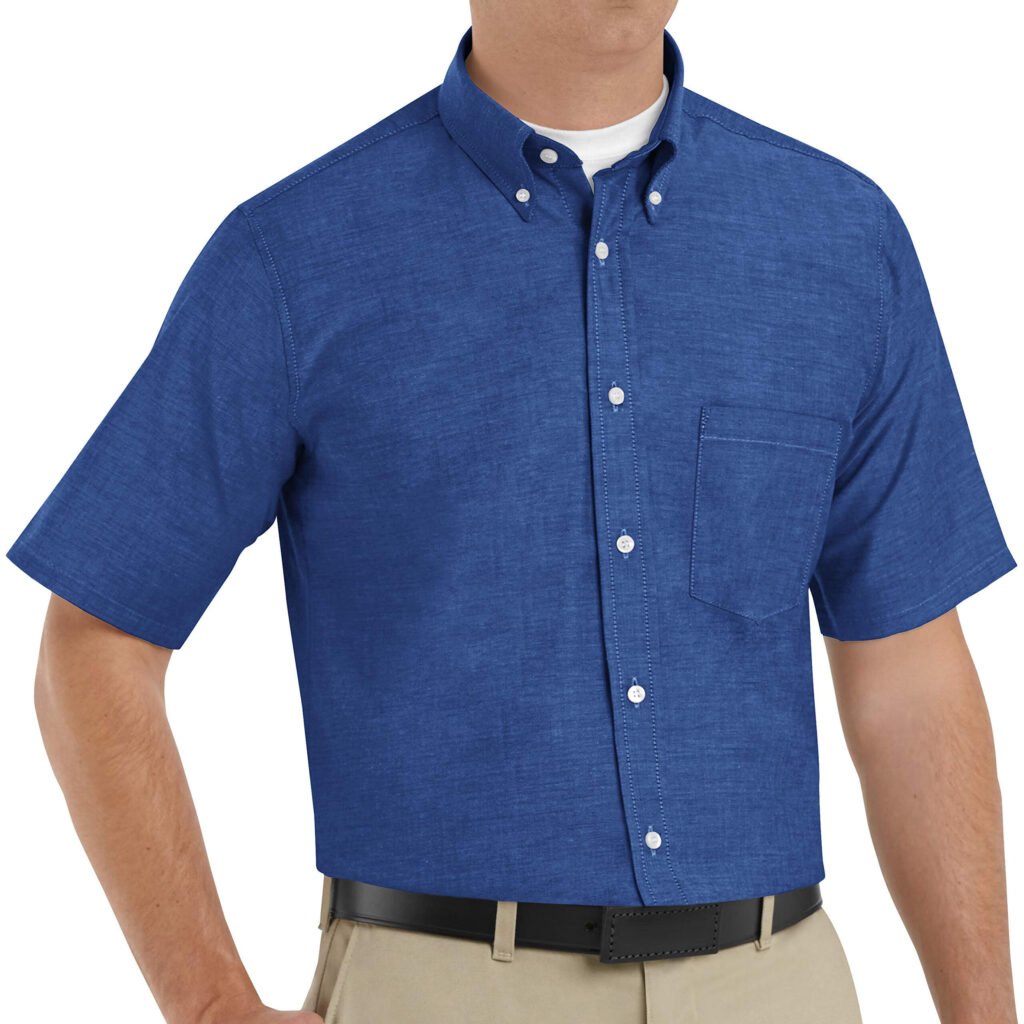
Adding embroidery or screen printing pushes minimums higher because of the setup—digitizing artwork, setting up embroidery machines, or creating screens. Standard embroidery MOQs start at 100 pieces per design; complex or large designs can require 200–300 pieces. One-color screen prints often need at least 100 pieces, while multi-color prints require 150–200 pieces per design per color. These requirements exist because thread changes and screen setups take time, and small runs reduce machine efficiency.
Apparel Decoration and MOQ Dynamics
Embroidery MOQs & Cost Drivers
- Machine Setup & Digitization • Standard Chest Logo (5,000 stitches): MOQ 100 shirts. Cost \$2.00–\$3.00 per shirt at 100 pieces; \$1.50–\$2.00 at 200–499; \$1.20–\$1.50 at 500+. Digitization fee \$80–\$120 (often waived above 500). • Large Embroidery (12,000–15,000 stitches, e.g., back panel): MOQ 200–300. Cost \$3.50–\$4.50 at 200–299; \$3.00–\$3.50 at 300–499; \$2.50–\$3.00 at 500+. • Thread Color Changes: Each additional thread color can add \$0.10–\$0.20 per shirt and may bump MOQ by 50–100 shirts, since thread changeovers slow down production.
- Specialty Threads & Effects • Metallic Thread: Adds \$0.15–\$0.25 per shirt, MOQ remains 100–200, but some factories require 200+ to account for special tension adjustments. • Puff (3D) Embroidery: MOQ 150–200, cost \$2.50–\$3.50 per shirt for small logos; \$3.50–\$4.50 for larger designs. • Appliqué Work (multiple fabrics): MOQ 200–300, cost \$4.00–\$5.00 per shirt. Adds complexity—and often longer lead times (2–3 extra weeks).
Screen Printing MOQs & Color Separation Costs
- Screen Setup & One-Color vs. Multi-Color • One-Color Screen Print (≤10 sq. inches): MOQ 100 shirts. Cost \$1.00–\$1.50 per shirt at 100–199; \$0.80–\$1.20 at 200–499; \$0.50–\$0.80 at 500+. Setup fee \$30–\$50 per color for runs under 200; waived above 200. • Two-Color Screen Print (10–20 sq. inches): MOQ 150. Cost \$2.50–\$3.50 at 150–199; \$2.00–\$2.80 at 200–499; \$1.50–\$2.00 at 500+. Setup \$50–\$80 per color for under 200; waived above 300. • Three-Color & Full-Color (Halftone): MOQ 200–300. Cost \$4.00–\$5.00 at 200–299; \$3.00–\$4.00 at 300–499; \$2.00–\$3.00 at 500+. Each extra color adds \$0.30–\$0.50 per shirt. Setup \$80–\$120 per color if under MOQ.
- Print Location & Garment Effects • Chest Print vs. Sleeve vs. Back: – Chest: Standard, lowest cost. – Sleeve (smaller area): Often \$0.10 cheaper per print because lower fabric coverage, no plate change. MOQ remains the same. – Back (large coverage): Add \$0.30–\$0.50 per shirt, MOQ typically 200–300 due to larger screen size.
- Specialty Prints (Reflective, Glow-In-The-Dark, Puff Inks) • Reflective Inks: MOQ 300. Cost \$1.50–\$2.00 per shirt on top of regular print fee. • Glow-In-The-Dark: MOQ 300. Cost \$1.75–\$2.25 per shirt. • Puff Ink (3D effect): MOQ 200. Cost \$1.50–\$2.00 per shirt. • All require additional curing time and may need special screens, driving up both MOQ and price.
- “Discharge” vs. “Plastisol” vs. “Water-Based” • Plastisol Ink: Most common, softer hand at higher volumes. MOQ 100. • Water-Based Ink: Softer finish, but more color limitations. MOQ 150. Cost \$0.10 more per shirt due to slower curing and machine cleaning. • Discharge: Removes dye from fabric to create a vintage look. MOQ 200. Cost \$0.50–\$0.75 more per shirt due to chemical prep.
Quality Control & Sample Runs
- Pre-Production Samples • Factories often charge \$50–\$100 per sample shirt, which includes one embroidery or one-color print. Subsequent changes to artwork add \$20–\$50 per revision. • Digital mock-ups before sample help reduce miscommunication but cannot guarantee exact finish.
- Production Samples vs. PP Samples (Pre-Production) • PP Sample: A fully finished garment with all branding and customization. MOQ: 5–10 garments. Cost \$30–\$50 each depending on complexity. • Production Sample: Taken from actual production line. MOQ: None (included in bulk order).
- Risk of Color or Stitch Mismatch • Embroidery Thread vs. Fabric Shade: Slight differences occur under various light sources. Always request physical swatches rather than relying on digital color codes. • Print Ink vs. Fabric Dye: Plastisol inks sit on top of the fabric; discharge prints blend with the dye. Colorfastness and wash tests should be conducted on sample shirts (ISO 105-C06 standard) to avoid large-scale returns.
Ready to launch your private label Oxford shirts without getting blindsided by hidden MOQs and setup charges?
Choosing the right customization methods for your private label Oxford shirts involves carefully balancing perceived brand value with upfront MOQ realities. Woven labels provide a premium finish but require 200–300 pieces per design, while printed labels need 500–1,000. Hang tags, packaging, embroidery, and screen printing each push MOQs higher—often to 500–1,000 units—because of specialized setups. By understanding these thresholds, you can strategically plan orders to minimize wasted inventory, control costs, and maximize ROI.
Ready to launch your private label Oxford shirts without getting blindsided by hidden MOQs and setup charges? Partner with SzoneierFabrics, a China-based fabric R\&D and manufacturing partner specializing in B2B apparel solutions. We offer:
- Flexible MOQ Solutions: Custom label, hang tag, and packaging MOQs tailored to your needs—plus creative options to combine runs with complementary product lines.
- Free Design Consultation & Samples: Rapid prototyping of labels, tags, and packaging so you see exactly what you’ll get before you commit.
- Low MOQs on Stock Fabrics: Get started with as few as 80 shirts per color using our extensive stock fabric library (classic white, navy, light blue).
- Transparent Cost Breakdowns: Detailed quotes that clearly itemize setup costs, surcharges, and per-unit pricing to avoid surprises.
- Comprehensive QC & Testing: In-house ISO standard wash, colorfastness, and durability testing to ensure your branding looks and performs as promised.

